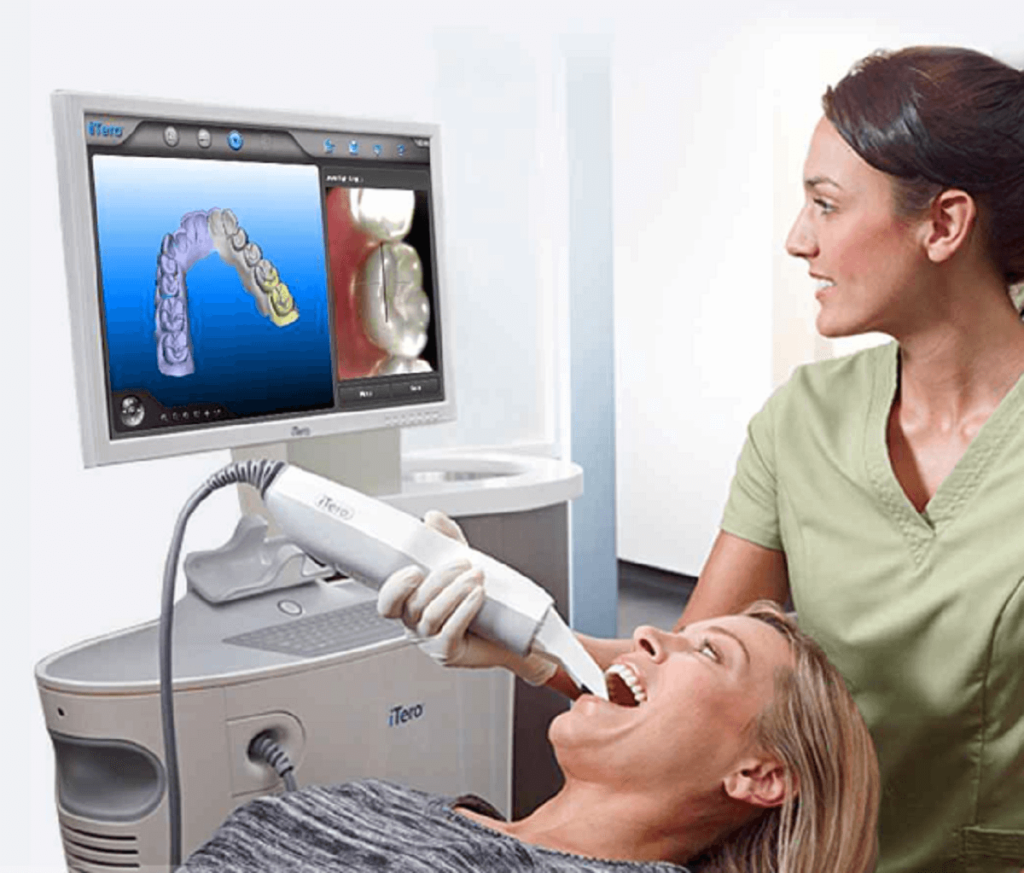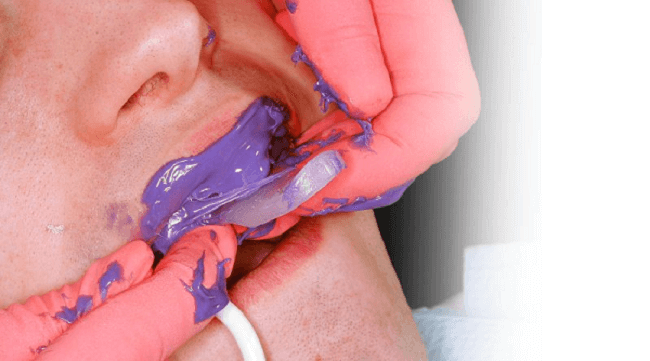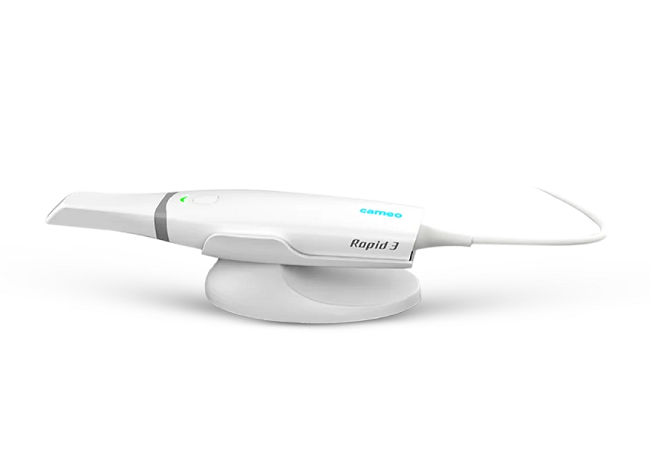Just like any other sector, technology has also transformed dentistry. It has changed the way dentists perform dental treatments. One of them is taking dental impressions. Previously, dental impressions were taken using gooey materials, which was messy, time-consuming, and prone to errors. But now, dental impression scanners are making the process much simpler and improved. In this article, you’ll learn what a dental impression scanner is, how it compares to traditional impressions, and where it helps the most. We’ll also talk about dental lab scanners and how companies like Aidite make digital tools for better results.

What is a Dental Impression Scanner?
A dental impression scanner is a device that takes pictures of your gums and teeth. Your dentist will hold a small wand-like camera and move it throughout your mouth to take the photos. It will create a 3D picture on a computer.
The intraoral scanner produces detailed digital models that appear immediately on a screen. These models are then used by dentists for treatment planning, the creation of crowns or bridges, and communicating information with dental labs. Dental impression scanners have greatly simplified the process of taking mouth impressions for everyone.
Dental Impression Scanner vs Traditional Methods
Let’s see how both methods of taking dental impressions compare:

Accuracy and Precision
Dental Impression Scanner:
- Creates highly detailed 3D images that show even minor details
- Allows dentists to examine the scan immediately and retake if needed
- You can zoom in to see all the details clearly
Traditional Methods:
- The material can shrink
- Incorrect blending of the material can lead to faults
- May become damaged while shipping to the laboratory
Patient Comfort
Dental Impression Scanner:
- Quick and easy process
- No gagging feeling
- No bad taste or smell
- Takes less time in the dental chair
- Much better for people with sensitive gag reflexes
Traditional Methods:
- Needs to keep thick, gooey material in your mouth for several minutes
- Often causes gagging or discomfort
- Materials taste unpleasant
- Needs to be redone if the initial attempt does not work
- Difficult for those with respiratory difficulties
Turnaround Time
Dental Impression Scanner:
- Receives digital images immediately
- No waiting for materials to set
- Able to fabricate crowns or bridges same-day in certain situations
- Transfers files to dental laboratories immediately
- Results in fewer trips to the dentist
Traditional Methods:
- Requires time to mix material
- Have to wait 3-5 minutes for the material to harden
- Typically takes more dental visits
- Require cleaning of impressions prior to lab shipment
- Shipping out to labs takes days away from the process
Cost Effectiveness
Dental Impression Scanner:
- More expensive to purchase initially
- Saves on impression material in the long run
- Fewer do-overs due to increased accuracy
Traditional Methods:
- Less expensive to begin using
- Recurring expense for impression materials
- Additional shipping costs to labs
Training and Learning Curve
Dental Impression Scanner:
- Requires computer skills and training
- Can need to learn new updates to software
- Takes time for dental staff to get used to
Traditional Methods:
- Familiar for dentists with lots of experience
- Simple to train new dentists
- Requires good hand work rather than knowledge of technology
Workflow
Dental Impression Scanner:
- Works with other digital dental equipment
- Connects directly into systems that fabricate crowns and bridges
- Simple to save and retrieve patient files
- Easy to share with other dentists for consultation
Traditional Methods:
- Requires physical storage space
- Models can deteriorate over time
- Hard to share with other dentists
- Numerous steps between the dental office and lab
Applications of Dental Impression Scanner
Digital impression scanners have numerous advantages in dentistry. Here are some of them:
Crowns and Bridges
Dental impression scanners create extremely accurate models for bridges and crowns. They get every detail of your tooth and the surrounding teeth. This allows them to create crowns and bridges that perfectly fit and look like your other teeth.

Orthodontics
For clear aligners and braces, digital dental impression scanners are extremely useful. They provide precise models for planning tooth movement. They can demonstrate what your teeth will look like once treatment has been done.
Implant Impressions
Dental implants must be extremely accurate. Dental impression scanners record the precise location of implants and the tissue surrounding them. This allows for improved-fitting teeth to be attached to the implants.
Dentures
Digital impressions can make dentures fit much better. Scanners take pictures of all the soft tissue details required for comfortable dentures. Dental labs can produce dentures that fit better when they use these scans.
How Dental Impression Scanners Work?
- Light Patterns: The majority of scanners shine unique light patterns onto your teeth.
- Taking Pictures: Unique cameras capture the way that light changes shape when it bounces off of your teeth.
- Computer Work: The software converts these photos into 3D replicas of your teeth.
- Cleaning Up: The software automatically corrects any issues with the model.
- Sending Files: The completed scan is saved in file formats that are compatible with other dental software.
Aidite Dental Scanners
Aidite is a reputable company that produces digital dental equipment for clinics and dental labs. Their dental lab scanner is designed to be quick, precise, and simple to use. It supports a wide range of CAD/CAM software and integrates into your existing setup without any issues. Their scanners utilize high-resolution cameras and sophisticated software that produce accurate images in seconds. The Aidite scanner employs artificial intelligence to enhance accuracy and automatically locate margins.

Here’s what Aidite intraoral scanners provide:
- Quick 3D scanning for precise impressions.
- Open system that can be used with other digital equipment.
- Easy-to-use design that’s simple to learn.
- Good for crowns, bridges, implants, and more.
Aidite provides complete digital solutions so you can scan, design, and mill in a single smooth operation. It saves time and makes your workflow optimal from beginning to end.
FAQs About Dental Impression Scanners
What is a digital impression scanner?
A digital dental impression scanner is a device that employs a camera to create 3D impressions of your teeth without gooey material. It produces highly detailed images of teeth required for fabricating dental crowns, bridges, dentures, etc.
What is the difference between traditional and digital impressions?
Traditional impressions involve gooey material that you bite down on, whereas digital impressions involve a camera that takes photographs of your teeth without mess.
How much do digital impression scanners cost?
Digital impression scanners typically range from $15,000 to $35,000 based on brand, model, features, and software included.
Are digital impressions better?
Digital impressions tend to be more accurate, more comfortable, and quicker. Ultimately, the best option for dentists will depend on what their dental practice requires, their budget, and the types of treatments they perform.
Conclusion
Dental impression scanners have made significant advances in dentistry. They provide more precise results, make patients more comfortable, and save time for all. They eliminate many issues that are associated with traditional impression techniques. With advancing technology, dental impression scanners will play an increasingly vital role in dental clinics worldwide. Aidite has assisted numerous dentists in making the transition to digital processes with their advanced scanning technology. By acquiring high-quality dental impression scanners such as Aidite’s, dental clinics are able to operate more accurately, save time, and better look after their patients.



